Chapter 6 Early Growth Of Nationalism Background
Nationalist Associations before Indian National Congress :
According to Dr. Anil Sil, the nineteenth century was an “Age of Association”. The organizations that came up during this period were ‘Bangabhasa Prakashika Sabha’ (1836 A.D.), and the Landholder Society (1838 A.D.). ‘British India Society’ (1839 A.D.), ‘Bengal-British India Society’ (1843 A, D.),
‘British Indian Association’ (1851 A. D.). ‘Indian League’ (1875 A. D.), Indian Association’ (1876 A. D.), ‘Indian National Congress (1885 A. D.), etc. These associations helped develop national feelings.
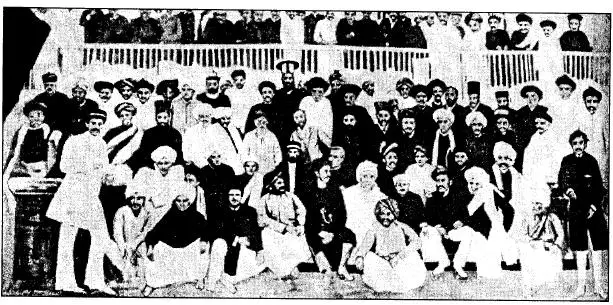
The Government’s policy of suppression worked as another factor for the Indian discontent. Lord Mayo, Lord North Brooke, Lytton, Lord Dufferin, Curzon, and others adopted suppressive policies.
“WBBSE class 8 history chapter 6 notes”
| Class 8 General Science | Class 8 Maths |
| Class 8 History | Class 8 Science LAQs |
| Class 8 Geography | Class 8 Science SAQs |
| Class 8 Maths | Class 8 Geography |
| Class 8 History MCQs | Class 8 History |
Indian Association:
Many assume the ‘The Indian League’ of Sishir Kumar Ghosh merged up into the ‘The Indian Association’. On 26th July 1876 A.D. Sir Surendranath Banerjee founded the Indian Association.
At a mass rally at the Albert Hall, he referred to the foundation of this Association as a symbolic platform to upraise Indian hopes and demands. Sibnath Shastri, Anandamohan Basu, Dwarakanath Gangapadhyay, and others stood beside him on the same cause.
Surendranath Banerjee
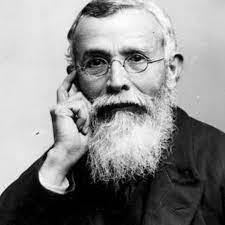
The Indian Association had four political objectives-
- Organizing a strong public opinion in the country.
- Uniting the various people of India based on a common political ideal.
- The promotion of friendly ideas between Hindus and Muslims.
- To rally the masses in the political movement.
The Association played a vital role in the agitations against the Ilbert Bill controversy and in decreasing the age limit of Indian Civil Service examinees from 21 to 19. ‘The Bengalee’ published by Surendranath was one of the important outlets for spreading patriotism.
“early growth of nationalism WBBSE class 8 history”
Chapter 6 Early Growth Of Nationalism National Conference
On the other hand, according to Dr. Bipan Chandra, Surendranath Banerjee took many initiatives for the foundation of the Congress. His ‘Indian Association’ (1876 A.D.) initiated and acted as a favoring factor in preparing the mental setup for the Congress.
The ‘All India National Conference’ called by Surendranath in Town Hall, Calcutta in 1883 A.D. paved the way for the origin of the Congress in 1885 A.D.
According to the biographer historian Hume, William Wedderburn, a retired member of the Civil Service, from secret documents of police reports, came to know about the probability of the growing forces of popular discontent.

Class 8 History Wbbse
For that reason, on 1st March 1883 A.D., he addressed in an “Open letter” to the graduates of the Calcutta University which meant founding the Congress for the social, moral, and political upgradation of the Indian population. According to this plan Congress was founded.
The foundation of the National Congress :
The origin of the Indian National Congress was not an accidental event. Though it is commonly believed that Mr. A. O. Hume was the “Father of the Indian National Congress”, there are many other opinions regards the genesis of the Congress and its first president was Womesh Chandra Bandyopadhyay.
The efforts of Hure behind the formation of the National Congress cannot be denied. His main aim was to provide a ‘Safety valve’ for the British Empire against the growing forces of public uprisings.
“exercise 6 solved questions on early nationalism class 8”
He thought that for formal fulfillment of the demands, there was a need of Congress: He had a secret discussion with the Governor General in this affair. Mainly for the sake of the safety of the British rule Duffrin nodded positively to Hume’s plan.
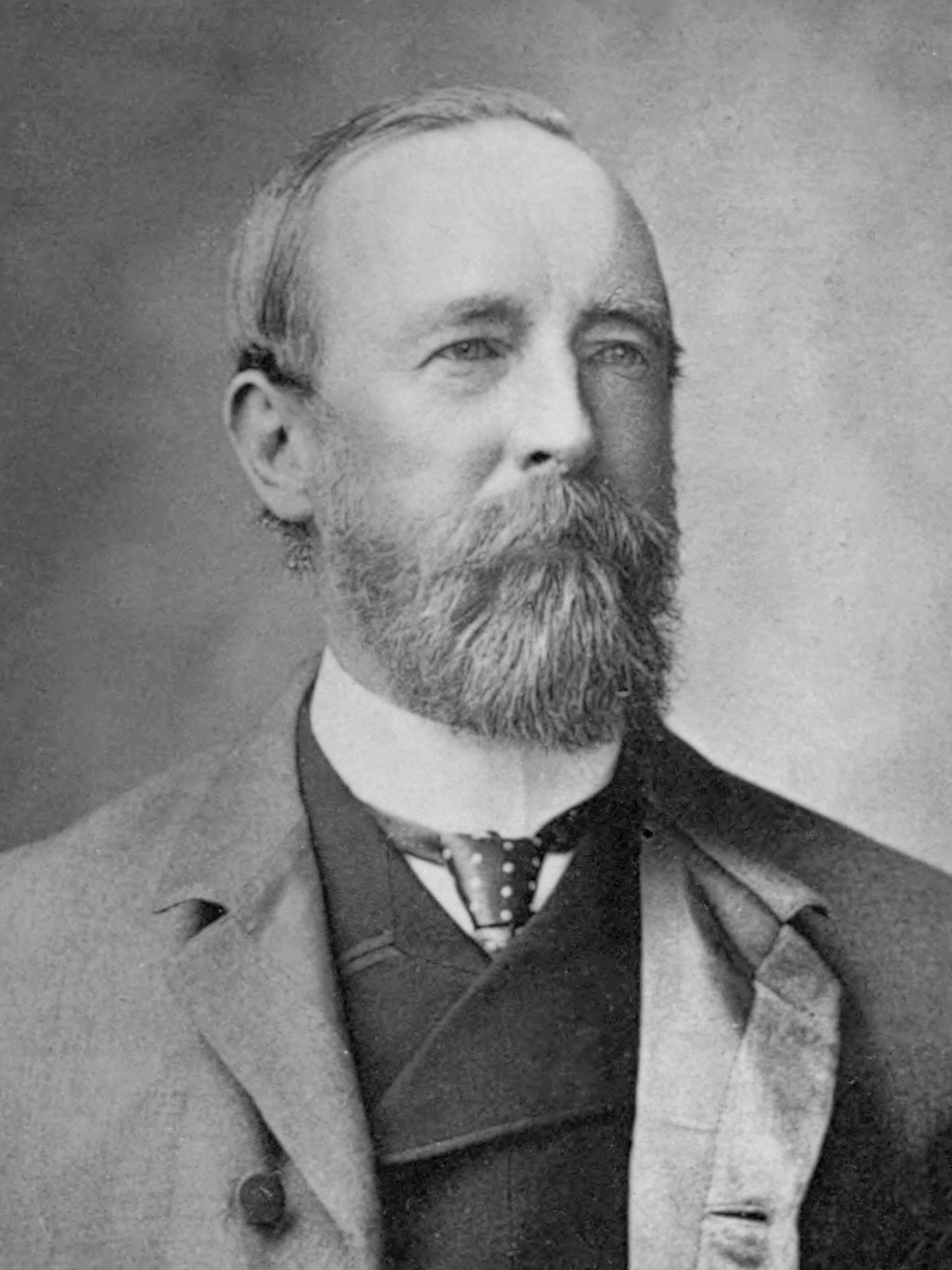
According to leftist historian R. P. Dutta ‘Congress is the result of a conspiracy between Hume and Dufferin’. In conclusion, it can be said that Congress took birth in a special situation in the post-revolt period of 1857 A.D.
Historian R. C. Majumdar gave less significance to the words of Pattavi Sitaramaiyya. According to him, its origin should be searched differently.
According to Cambridge Historian Anil Sil, the role of Lord Dufferin in the foundation of Congress is a myth. So the actual origin of the Congress still today remains in darkness.
“WBBSE class 8 history chapter 6 important questions”
Historian Percival Spear considers that even if Congress was developed as a safety valve by Dufferin and Hume, there are doubts as to how much this theory could be enacted.
According to R. P. Dutta Congress originated from the conspiracy between Hume and Dufferin, though no conclusions about this can be drawn.
Chapter 6 Early Growth Of Nationalism Lord Lytton And Repressive Acts
Vernacular Press Act:
Lord Lytton imposed some conditions by passing the ‘Vernacular Press Act of 1878 A.D.’
The conditions were
- No government employee can edit any newspaper without prior permission of the government.
- The editor as well as the publishers and the other associated persons will be arrested if any newspaper published in a native language, reports anything against the British.
The equipment and machinery will also be seized. Many people called it the ‘Gagging Act’ as it tried to strangulate the voices of the press. Large-scale protests started against this Act.
After passing the Press Act of Lord Lytton ‘Somprakash’ and ‘Sahachar’ were first banned. ‘Amrita Bazar Patrika’ of Sisir Kumar Ghosh was published both in English and Bengali.
With the enactment of this Act, it was published in English only. The Press Act literally made the Indians anti-British.
Arms Act:
For imperialist cause and the safety of the Europeans in India, this Act had to be enacted. It meant to curb the weapon power of the Indian uprisings ‘developed out of the growing dissatisfaction.
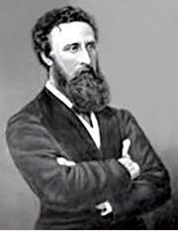
In 1878 A.D. Lord Lytton for the cause of imperialist expansion came up with the Act more strongly. In 1880 A.D. the ‘Arms Act’ was passed announcing no Indian was to keep arms without the Government’s permission. Illegal maintenance of arms shall lead to penal servitude.
Ilbert Bill Agitation:
The British rulers in any way could not stop the motion of the Indians. This agitation of the Indians ended when Lord Ripon lifted this Act when he came to India as Governor-General in 1882 A.D.
“factors leading to the rise of nationalism in India”
The European Magistrates had the power of trialing the Indians, but the Indian District Magistrates or Judges did not possess the right to trial the European offenders merely for the cause of racial discrimination.
Lord Ripon, the then Viceroy (1880-1884 A.D.) thought this to be inhuman and unjust, and to remove this illogical social discrimination a bill was passed. This is popularly known as the “Ilbert Bill”.
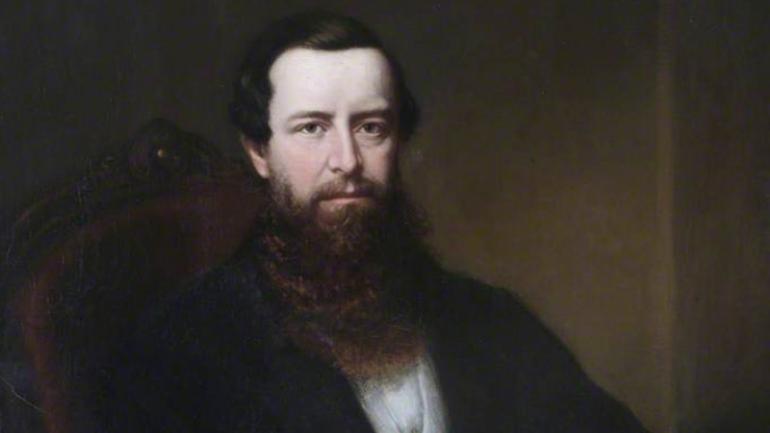
A committee was made under the leadership of the then Law Member of the Viceroy’s Council Sir C. P. Ilbert in Feb 1883 A.D. After requisite investigation, a bill was drafted. In this Bill, the Indian Magistrates and Sessions Judges were given equal status with their European counterparts.
When the Bill was passed the Europeans took offense in it and they launched serious agitation against it. J. H. A. Branson, the then Judge of the Calcutta High Court, on the cause of European safety, started a movement against the Bill and formed the Defence Association.
Kelvin J. J. Kessuik and others joined hands with him. Lord Ripon faced deep criticism in the British newspapers.
Chapter 6 Early Growth Of Nationalism First Two Decades Of The National Congress
In the nineteenth century, Congress took birth as a national outlet for realizing the Indian demands. In 1885 A.D. Allan Octavian Hume founded the Indian National Congress.
On 1st March 1883 A.D. he is an ‘Open letter’ had addressed the graduates of Calcutta University, and from this took the birth of the National Congress.
The first session of Congress was organized at Gokuldas Tejpal Sanskrit College of Bombay on 25th December 1885 A.D. in this session from the 72 delegates, Barrister Womesh Chandra Bandyopadhyay was the first elected President.
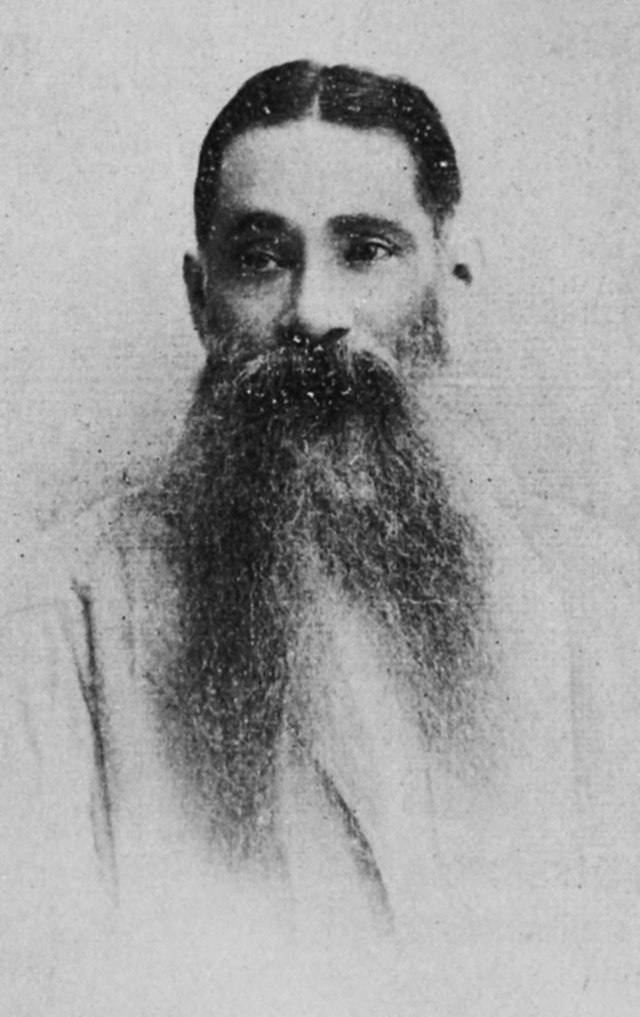
In his Presidential address, he spoke about the primary four objectives of the Congress
- Promotion of intimacy and friendship among the earnest workers in different parts of the country who had been working for the country’s cause.
- Eradication of all possible race, creed or provincial prejudices in order to develop sentiments of national unity.
- To discuss the mature opinions of the educated classes in India on important and pressing social problems.
- To determine the methods of action to be pursued by the Indian politicians for public interests during the next one year.
At first, for the first twenty years the Congress was committed mostly to the educated aristocrats and it ‘was not a people’s body.
During this period, the most prominent moderate leaders were Surendranath Banerjee, Firoz Shah Mehta, Dadabhai Naoraji, Ananda Mohan Basu, Dinsha Wacha, Badruddin Tayebji, Ramesh Chandra Datta, Gopal Krishna Gokhale, and others.
Activities of the Moderates:
The British after occupying the administrative power used it for the sake of their imperialist interest. In the Central and Regional administrative bodies, there was no scope for the Indians.
Even if, one or two were selected they remained biased to the British Government. Moreover, the governmental setup did not nest on decentralization policy. For that reason, Congress demanded- the ‘Indianisation’ of the British Administration and ‘Decentralisation’ of the administrative setup.
The Congress leaders demanded for the provision of inclusion of Indian representatives in the central and provincial councils. Due to the pressure of their movement, the British government was forced to pass the ‘Indian Council Act of 1892 A. D.’
By this Act, some members in the central and provincial councils were to be selected from the non-governmental sectors. Furthermore, the government assured to accept the demand of electing few members in the legislative councils, which meant a victory for the Congress.
“role of socio-religious reform movements in nationalism”
But later these victories were dubbed as ‘hoaxes’. The British imperialist cause was responsible for the destruction of Indian industry, trade, and agriculture. In the unequal competition with the European traders, the Indian traders suffered losses.
Cottage industries were destroyed. The agricultural system was at the British hands. The government paid no heed to the proper payment of the workers and peasants and tried the least to stand by the affected mass during the famines.
So blaming the British rule for the economic distress of India, Dadabhai Naoraji wrote ‘Poverty and Un-British Rule in India’ and ‘England’s duties towards India.
‘ Other than these R. C. Dutta’s ‘The Economic History of India’, M. G. Ranade’s ‘Indian Economy’, and William Digby’s ‘Prosperous British India’ are some of the notable writings.
In 1887 Governor General Lord Dufferin humiliated Congress by considering it as ‘a microscopic minority of the people. Lord Curzon also wrote to Home Secretary Hamilton that all works have been done for “the peaceful demise of the Congress”.
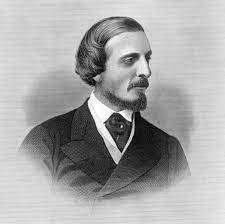
The British employees called Congress members as “disloyal babus”, “seditious brahmin”, and “Violent villains”. They described the Congress as “a factory of sedition” and “a big jump into the unknown”.
Importance of the moderates:
The method of agitation adopted by the Congress was ‘Prayer, Petition and Protest’ or ‘3P’s. They avoided the direct political struggle. Some considered this policy as “Political mendicancy”.
Among these moderate leaders, the notable are W. C. Banerjee, Surendranath Banerjee, Firoz Shah Mehta, Dadabhai Naoroji (he was called “father of Indian Politics”), Badruddin Tayebji, and others. Dr. Sumit Sarkar criticized them as ‘Part-time politicians’.
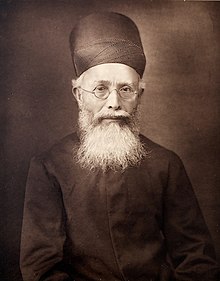
Revolutionary Aswini Kr. Dutta humorously criticized the sessions as ‘Teen Din Ka Tamasha’. As communication with the commoners was lacking, some considered Congress as an organization of the elite class society.
The moderates succeeded in rising the national consciousness of the people against British rule. Dr. Amalesh Tripathy in his book the Extremist challenges said that the Dadabhai Naoroji failure of the moderates gave rise to extremism.
S. R. Mehrotra in his book ‘Towards India’s freedom’ has said that the Congress leaders have proved their foresight by adopting this method of agitation in that situation.
Because when the political consciousness of the people had matured they acted in the right way. Because if the Congress would have gone in the way of revolutionary terrorism from the beginning the political unification of the masses would have grown doubtful.
So Congress had played a positive role. According to Bipan Chandra, “the early nationalists laid. strong foundations for the national movement, to grow up on and that they deserve a high place among the makers of modern India”.
Economic Nationalism
Economic nationalism is an umbrella term that includes economics, politics, and theories designed to improve the domestic economy relative to foreign economics.
It, therefore, subsumes various theories like economic patriotism, protectionism, and mercantilism, all of which are different forms of ‘economic nationalism’.
If we think about a definition of economic nationalism it must be expressed that taking issue with the generalized remit of economic nationalism in recent writings, it suggests that it consists of practices to create, bolster and protect national economics in the context of world markets.
Moderate congress leaders like Ramesh Chandra Datta, Dadabhai Naoroji, and Mahadev Gobinda Ranade openly criticized the role of the British in the economic crisis of India. It is called ‘economic nationalism’.
Among the moderates, notables were Surendranath Banerjee, Dadabhai Naoroji, G. K. Gokhale, Firozshah Mehta, and others. The British Government took advantage of the conservative thoughts.
The Home Secretary Morley wrote to Minto “The Congress collapse was a great triumph for us”. Sumit Sarkar considered the split as ideological which strengthened the national movement.
Rise of Extremist Politics
The main achievement of the Surat session was that it accelerated the national movement with such force and confidence that was never seen in other times.
Aurobindo said that fortunately, the split did not develop frustrations rather communication developed soon between the two ways. This force soon started loosening British rule. The British paid no heed to the 3P policy of the Congress.
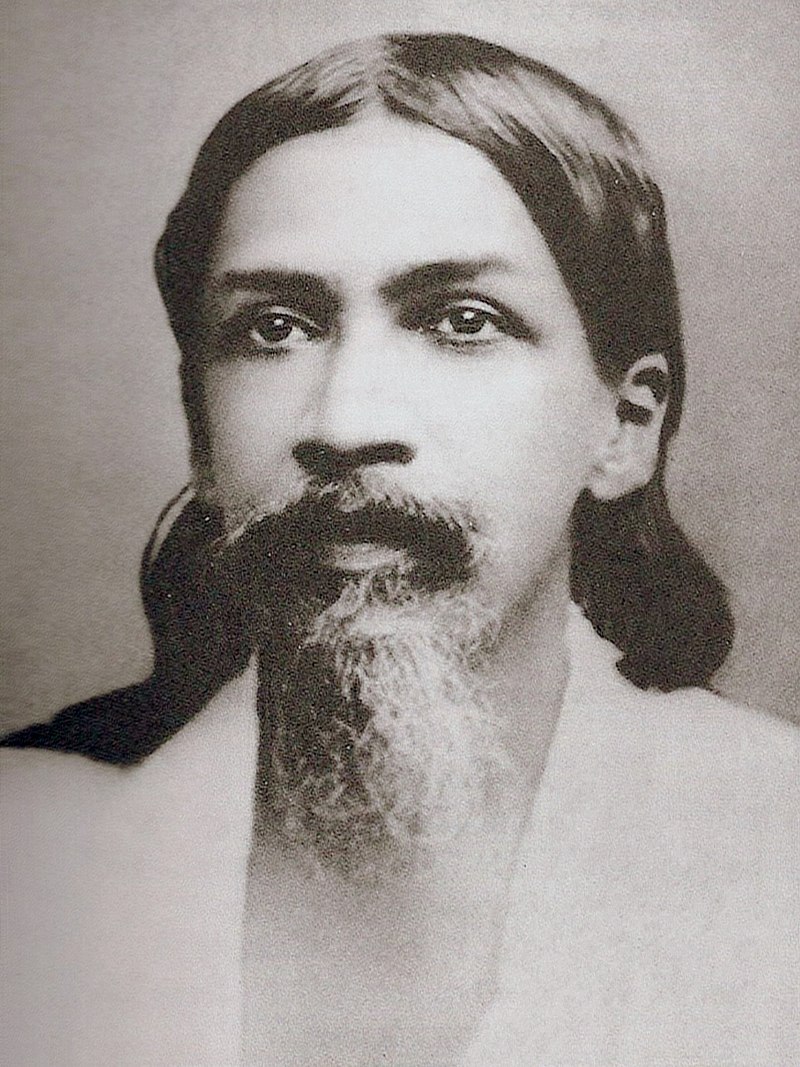
So some of the leaders chose a way of revolutionary terrorism. Notable among these leaders are Aurobindo Ghosh, Balgangadhar Tilak, Aswini Kumar Dutta, Bipin Chandra Pal, Lala Lajpat Ray, etc.
Apart from this Lord Curzon’s Partition of Bengal changed the views of the Congress leaders. In 1907 A.D. there was a rise of extremism against moderate policies. A change in the political history of Bengal was inevitable.
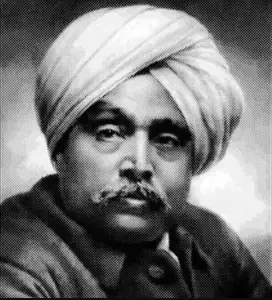
The government’s attitude helped in the rise of extremism. The early. Congress leaders achieved little and failed miserably. But they succeeded in raising the consciousness of the people against British Rule.
The early twenty years of the Indian national movement from 1885-1905 A. D. was moderate and it frustrated the Indians. So militant nationalism developed in India. Traditional Hindu Philosophy helped the development of this nationalism.
Balgangadhar Tilak of Maharashtra, Lala Lajpat Ray of Punjab, Arobindo Ghosh and Bipin Chandra Pal in Bengal gave the leadership. They supported the armed freedom struggle. There were many reasons for this development.
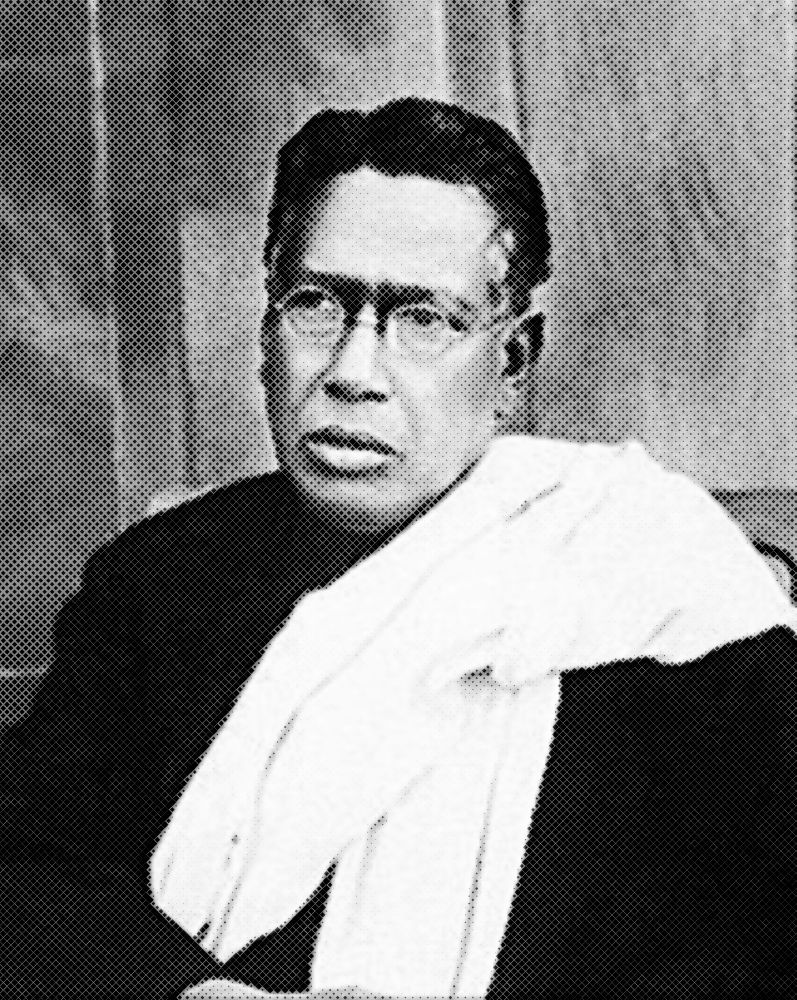
The political beggary of the Indian National Congress from (1885-1905 A.D.) frustrated Indians. In 1892 A.D. “Indian Council Act” was passed which made Indians more frustrated. Extremism developed within National Congress in this time.
“formation of Indian National Congress 1885 WBBSE”
The British exploited India to a great extent in this era. There was a huge drain of wealth and according to Bipan Chandra, it impoverished the Indians. Indigenous cotton textile age of 1896 A.D. was anti-Indian and Indian traders faced a great loss due to this act.
Chapter 6 Early Growth Of Nationalism Surat Session Of National Congress
The extremist movement within Congress had its birth during the phase of the anti-partition struggle. The debate in which the Congress leaders were engaged during 1905-07 A.D.
The process of agitation had its inevitable outcome in the division of Congress in the Surat Session. The extremists demanded Lala Lajpat Ray to be the President. But Surendranath and Gokhale opposed and Rashbehari Ghosh presided over the session.
The discontented Aurobindo, Tilak, Bipin Chandra, Lala Lajpat Roy, and others built another party within the Congress itself. Thus the Congress was divided. This was known as the “Surat split”.
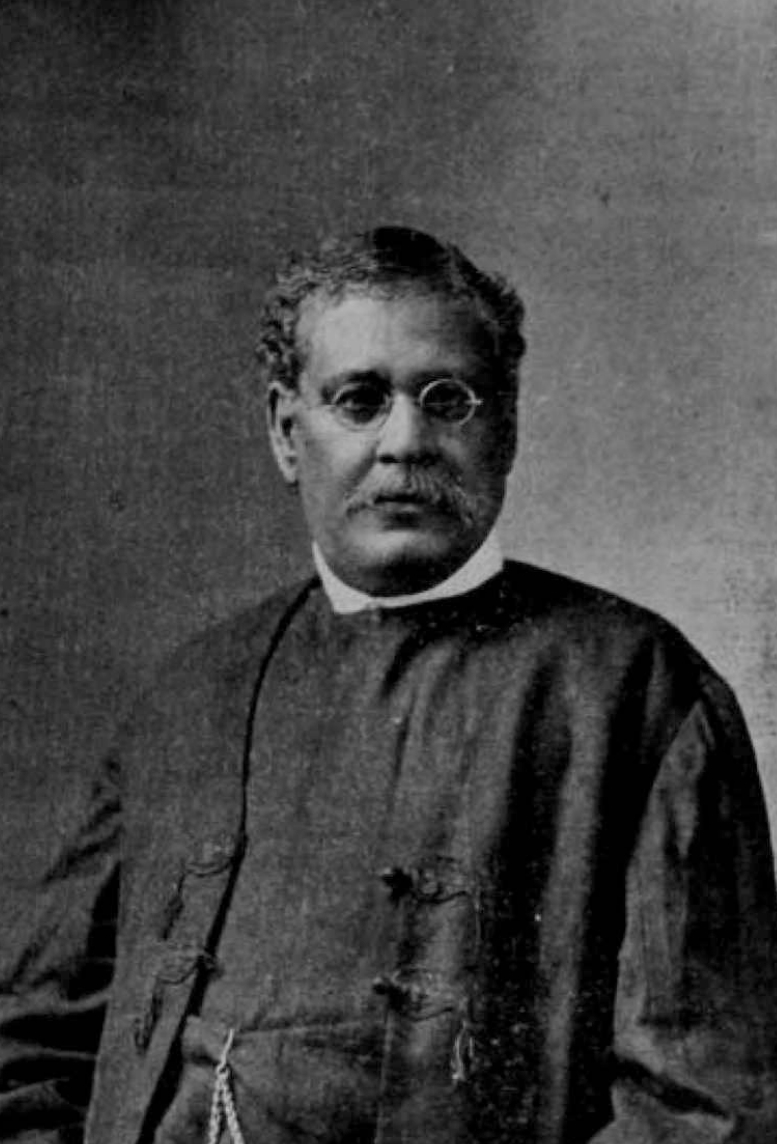
Among the moderates, notables were Surendranath Banerjee, Dadabhai Naoroji, G. K. Gokhale, Firozshah Mehta, and others.
The British Government took advantage of the conservative thoughts, The Home Secretary Morley wrote to Minto “The Congress collapse was a great triumph for us.”
Sumit Sarkar considered the split as ideological which strengthened the national movement.
“contributions of early nationalist leaders class 8”
Sarala Debi And Pratapaditya Utsav
Sarala Debi Chowdhurani (1872-1945) was the second daughter of Swarnakumari Debi and Janakinath Ghoshal. She was a graduate in English, having been awarded the ‘Padmavati gold medal’.
She wrote books like ‘Nababarsher Swapna’ (Dreams in the New Year), Jibaner Jharapata’ (The Fallen Leaves of life), ‘Shibratrir Puja’ (Worship on Shibratri), etc. Jeebaner Jharapata is a unique material in the study of Indian History.
This book was published in as a series in the weekly magazine ‘Desh’ from 24th Kartik, 1351 to 26th Jaishtha, 1352. It was first published as a book on International Women’s Year, in 1975.
Sarala Debi Chowdhurani
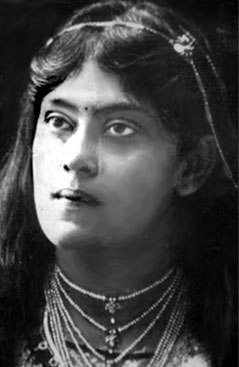
The autobiography Jibaner Jharapata’ tells us not only about the story of the young Sarala’s growing up into a lady, but also gives us glimpses of our country during that time. Normally a woman’s autobiography contains mundane incidents about daily life.
But Sarala Debi boldly defied the diktats of society and wrote about her activities outside the confinements of her home. Many of these events have made their place in history.
Jibaner Jharapata’ is of immense importance to understanding Bengali society today. In those days she helped in women’s organizations, encouraged boys to undertake physical training and form clubs, and even sang herself in functions and conferences.
As the first political leader of modern India, Sarala Devi had involvement with ‘Suhrid Samiti’ (1905) and pioneered the ‘Bharat Stri Mahamandal’ (1911).
Class 8 History Chapter 6 Wbbse
She introduced ‘Birashtami Utsav’ (1902) and ‘Pratapaditya Utsav’ (1903) to encourage the youths with the ideals of Lathi and sword fighting. Sarala Debi got married barrister of Punjab Pandit Rambhanja Dutta Choudhury in 1905.
The music for the first two lines of the song ‘Vande Mataram’ by Bankim Chandra was composed by her uncle Rabindranath. But Jadu Bhatta set the music on ‘Vandemataram’ first.
Sarala Debi composed music for the remaining lines sang the song ‘Vande Mataram’ in Calcutta Congress Conference (1905), and proposed to name it the National song of India.
Chapter 6 Early Growth Of Nationalism Anti Partition Movement Of Bengal
Lord Curzon with the advice of Sir Andrew Frazer accepted Risley’s proposal of the partition and finalized it on 03.12.1903.
Though Lord Curzon put forward the administrative advantages behind the partition of Bengal his main aim in announcing the Partition on 20th July 1905 A.D. was to curb the nationalist unity and fulfill the “divide and rule policy”.
Lord Curzon
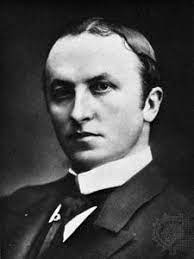
It was clearly said that a new province called ‘East Bengal and Assam’ shall be formed including Malda District, Dacca, Chittagong, Rajshahi, and Tripura.
Its capital shall be Dacca, while West Bengal, Bihar, and Orissa shall comprise the Bengal Province. Its capital shall be Calcutta. 16th October 1905’A. D. this partition was to be realized.
“methods of moderate nationalists in the freedom struggle”
Surendranath Banerjee described the event in his ‘The Bengalee’ as a ‘national disaster’. Hitabadi said that such a catastrophic event had not occurred in the last 150 years in the history of Bengal. A countrywide agitation started from this event.
16th October 1905 A. D. Rabindranath Tagore proposed to observe the ‘Raksha Bandhan Festival’. To develop the unity and fraternity of the Hindus and Muslims the Rakhi Bandhan was of immense significance.
Rabindranath Tagore
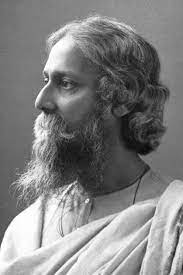
In the program of movement, the greatest emphasis was laid upon the boycott. A wide view can be had from Valentine Chirol’s book “Unrest India”. In his journal “Sanjibani” Krishna Kumar Mitra proposed the boycott of British goods like Ireland and China.
In 1905, on the 13th of July, he first gave the call of an economical blockade against the government by eschewing all foreign articles or boycotts.
On 17th July, at Bagerhat, Khulna, 21st July at Dinajpur, and 7th August at the connection of about 5000 students organized by the teachers at College Square and later at a mass rally at the Calcutta Town Hall under the leadership of Maharaja Manindra Chandra Nandi the proposal of the boycott was accepted. The Muslims accepted this proposal on the 23rd and 28th of September at two mass rallies near the Kali Temple of Kalighat.
Significance:
The Swadeshi Movement had a deep-rooted effect on national life.
The effects of the Swadeshi Movement were-
- Firstly, it brought a new dimension to the Indian freedom movement.
- Secondly, the terrorist secret societies like ‘Anushilon Samity’ and ‘Jugantar Dal’ got their chances of rising. According to Will Durant, “It was in 1905 that the Indian revolution began.”
- Thirdly, from the Swadeshi Movement onwards grew bitter feelings between the Hindus and Muslims. In 1906 A.D. Nawab Salimullah of Dacca formed the ‘Muslim League’. Sir Nirod C. Chowdhury in his “The Autobiography of an unknown Indian” wrote that this gave rise to communal bitterness.
- Fourthly, the anti-partition movement gave rise to extremism. In 1906 A.D. Dadabhai Naoroji put up ‘Swaraj’ as the aim of the Congress.
- Fifthly, the Swadeshi Movement had a deep impact on Bengal’s social and cultural lives and the thoughts of the Bengalees.
Class 8 History Chapter 6 Wbbse
Chapter 6 Early Growth Of Nationalism Swadeshi Era And Abanindranath Tagore
Abanindranath Tagore (1871-1951) nephew of Rabindranath was both an artist and a writer. What he created with his brush is painting and what he created with his words is literature Abanindranath is called the “father of modern Bengali art”.
His student Nandalal Basu kept this art trend alive. In 1905 he created Bharatmata, which is considered to be an immortal creation of Abanindranath. This creation in water colour is a world renowned painting.
“impact of British colonial policies on Indian unity”
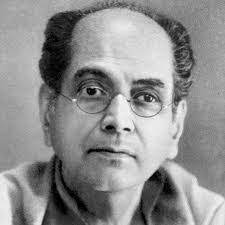
It was painted at a time when the country was in turmoil fighting the partition of Bengal. The specialty of Bharatmata is that it is actually Bangamata (Bengal as a mother).
Through the brushes of the painter, mother India was portrayed as a Goddess of prosperity. She looks like a hermit; she is in fact Mother India herself. She is Indian tradition personified as Mother India.
Abanindranath’s Bharatmata has four hands. A special characteristic of this painting is that a nationalist spirit flows through it. She wears saffron clothes and appears as a woman saint.
On her two left hands, she holds a book and a bunch of paddies. On the two right hands, we find a pair of white clothing and a string of Rudraksha (sacred beads).
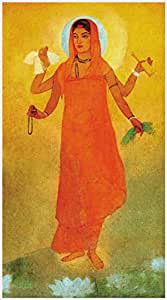
The most important characteristic of Bharatmata is that she is a combination of all the gods and goddesses worshipped in India. Above all, she is Devi Durga.
She is often seen as a lady on the back of a lion, in saffron clothing, and sporting the Indian national flag. In the second half of the Nineteenth Century, Kiran Chandra Banerjee wrote a play called ‘Bharatmata’ in 1873.
“chapter 6 early growth of nationalism long and short questions”
Abanindranath got the concept of his painting ‘Bharatmata’ from the painting ‘Swadhinatar Devi’ drawn by Eugine Dalacroa.
Importance:
The famous painting Bharatmata by Abanindranath is of great historical importance because it is not just an artwork. It expresses the concept of the eternal mother.
Motherland has been personified as a lady in this picture. Jayanta Sengupta, secretary, and curator of the Victoria Memorial Hall says ‘In this way the mother is seeking liberation through her sons’.
Among all the paintings of Abanindranath, this one is regarded as an icon and the most important among them all. The painting ‘Bharatmata’ is on display at Victoria Memorial Hall for viewing by the general public.
Rabindra Bharati Society is also quite active in this matter. Sister Nivedita (Margaret Elizabeth Nobel) was a great patron of ‘Bharatmata’. She wanted the painting to be carried all over India, from Kashmir to Kanyakumari, thereby promoting the spirit of nationalism.
Swadeshi Industries :
According to Dr. Majumdar, this movement not only helped in the spread of national goods but also in the aspects of the national language, literature, education, and political ideology. The inevitable outcome of the boycott was the necessity of Swadeshi.
The negative approach of the Boycott and the positive aspect of Swadeshi unified to give birth to a stronger Swadeshi Movement. Swadeshi shops grew up in various localities. Such a shop is ‘Messers B. K. Sen and Co’, at Calcutta.
Acharya P. C. Roy’s ‘Bengal Chemical and Pharmaceutical Works’ gained much popularity. The others were Dr. Nilratan Sarkar’s ‘National Soap Factory’, Sir J. N. Tata’s ‘Iron and Steel Co.’ Chidambaram Pillay’s ‘National Ship Co’ etc.
Other factories of matches, leather goods, sugar, salt, and cotton products developed during this period. Many Swadeshi Banks, Insurance and Agencies were founded at this time.
Swadeshi Education:
As a part of the Swadeshi Movement the ‘National Council of Education’ was founded on 11th March 1906 A.D. with 92 members. Under this council without any Government aids some colleges, 500 secondary schools, and more than 300 primary schools could be founded.
Chapter 6 Early Growth Of Nationalism Division In Hindu Muslim
Analysis of Rabindranath:
The most rational explanation, even if a little charitable, for Rabindranath Tagore’s political stance against the Muslims of East Bengal could be that he, at that point of Bengal.
Sincerely believed in a broad-based ‘Bengali-nationalism’, comprising Bangla-speaking Hindus and Muslims of both East and West Bengal. Therefore, politically preached the political project of a united Bengal.
Sometimes we say that the British provoked the Muslims against the Hindus. But they are not benefiting by it at present. Rabindranath, however eventually revised his thesis of the eternal Hindu-Muslim brotherhood of Bengal.
In an article named ‘Byadhi O Pratikar’ in 1907 Tagore wrote “There is no point in telling lies anymore. We must now admit that there is a contradiction between the Hindus and the Muslims of Bengal.
We are not only different from each other; we are also opposed to each other”. For the promotion of unity among the Hindus and the Muslims Tagore celebrated “Rakhi Bandhan utsab” in 1905 during the ‘Swadeshi’ and ‘Boycott’ movement.
So our proper development would never be possible without real love and respect with trust and honor to each other.
Revolutionary Terrorism:
Satish Chandra Bose formed Anushilan Samiti at 12 Madan Mitra Lane of Calcutta on 24th March 1902 A.D. The name Anushilan Samiti was adopted from the Novel ‘Anandamath’ written by Bankim Chandra.
Barrister Pramathanath Mitra was appointed as the first President of this Samiti. In this time, the Vice President was Chittaranjan Das and Aurobindo Ghosh was the treasurer. There were two streams of the system of revolution in Anushilan Samiti.
That is
- ‘Passive resistance’ and
- Armed revolution. Revolutionist Barindra Kumar Ghosh was in support of the armed revolution and secret murders.
After 1905 A.D. Anushilan Samiti had opened its branches in different areas of Calcutta and its neighborhood like Khidderpur, Darjipara, Pataldanga, Shibpur, Salkia, Serampore, Bali, Tarakeswar, Uttarpara etc.
Apart from this, the branches of Anushilan Samiti and many other secret societies were formed in Midnapore, Jessore, Nadia, Burdwan, Dinajpur, and Jalpaiguri.
“economic and political causes of rising nationalism”
The most important event was the attempt of murdering the Governor of East Bengal and Assam Bamfield Fuller, but it was failed and unsuccessful in Naihati station in December 1907 A.D.
Again, in 1909 A.D. the attempt to murder Andrew Frazer, the Governor of Bengal was unsuccessful in Midnapore. At this time the unsuccessful heroes were Hemchandra, Barin Ghosh, and Prafulla Chaki.
In 1907 A. D, the revolutionist Barindra Kumar Ghosh set up a factory in a garden house at 32, Muraripukur Road near the Manicktala area for making bombs.
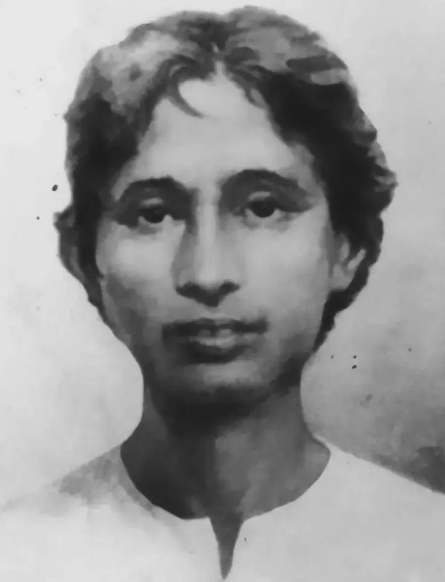
Hemchandra Kanungo and Ullaskar Dutta of Presidency College took charge of making bombs in that garden house. The main object was to murder the torturous Kingsford, the Magistrate of the Calcutta Presidency.
On 30th April 1908, they charged a powerful bomb on the car of Mr. Kenedy, mistaking it as the car of Kingsford thus killing innocent Mrs. and Miss Kennedy, the wife and the daughter of Mr. Kenedy.
After this incident, Prafulla Chaki, with the fear of being arrested, committed suicide. Khudiram was arrested in Wayini station, 25 miles away from the spot of this murder.
After a trial for a few months, Khudiram was hanged to death on 11th August. 1908 A.D. in Muzaffarpur Jail under section 304 of the Indian Penal code.
In connection with the Muzaffarpur murder, police started investigating in every corner and eventually found plenty of explosives in the garden house of Muraripukur. 37 revolutionists were arrested in this connection.
Barin Ghosh and Aurobindo were the main accused. Everyone was put up in Alipore jail and the ‘Alipore Bomb Case’ was started against them.
Kanailal Dutta and Satyen Bose, the two main accused of this case murdered Naren Goswami, the government witness, inside the jail on 1st September 1908.
In 1910-1912 A.D. many revolutionists were imprisoned in the ‘Barisal Conspiracy Case’ in connection with the political dacoities. Between 1907 A.D. and 1917 A.D. at least 64 political murders took place.
Just before the World War, the revolutionists looted 50 Mauser revolvers and 46,000 cartridges from ‘Radda and Co’ in 1914 A.D. in Dharmatala under the leadership of Jatindranath Mukherjee (Bagha Jatin) and with the inspiration from Bipin Behari Ganguly the founder of ‘Atmonnati Sadhan Samity’.
Jatindranath Mukherjee
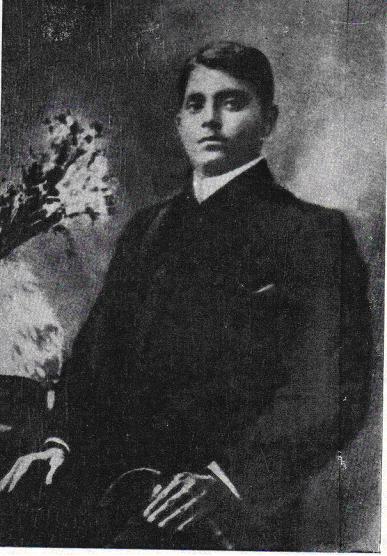
At last, the German Consul, in Shanghai, sent three ships ‘Maverick’, ‘Annie Larsen’, and ‘Henry-S.’-loaded with arms and weapons in Raimangal and Bageswar area of Sundarban. But these three ships were seized by American, British, and Dutch officials.
“practice exercises on early nationalism WBBSE history”
On 5th September 1915 A.D., police raided the ‘Universal Emporium’ on the basis of a secret clue. After that, Charles Tagert, the Police Commissioner, encircled the group of Bagha Jatin on the bank of the Buri Balam river.
A battle started between the two groups on the bank of Buri Balam on the 9th of September 1915 A. D. In this battle, four companions of Bagha Jatin, namely, Jyotish Pal, Chittapriya Raychowdhury, Manoranjan Sengupta, and Niren Sengupta fought gallantly.
But in the gunfight for 20 minutes, Bagha Jatin became seriously injured and died in Balasore hospital on 10th September. In a trial, Jyotish Pal was sentenced to imprisonment for a lifetime (14 years) and the injured Manoranjan and Niren were hanged.
